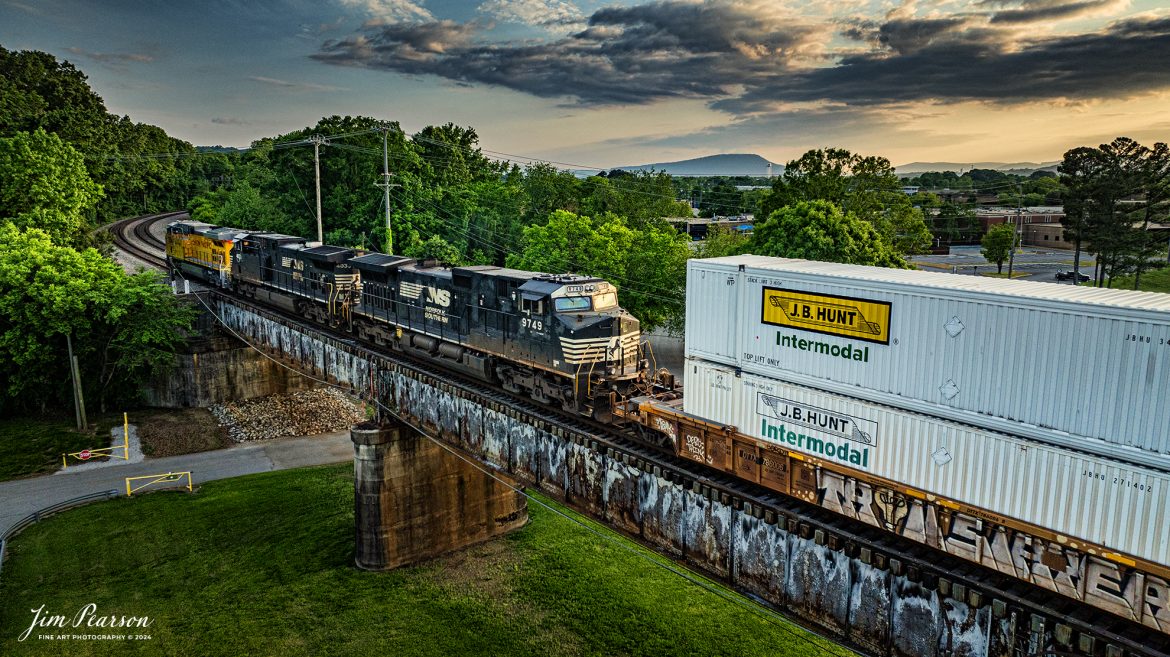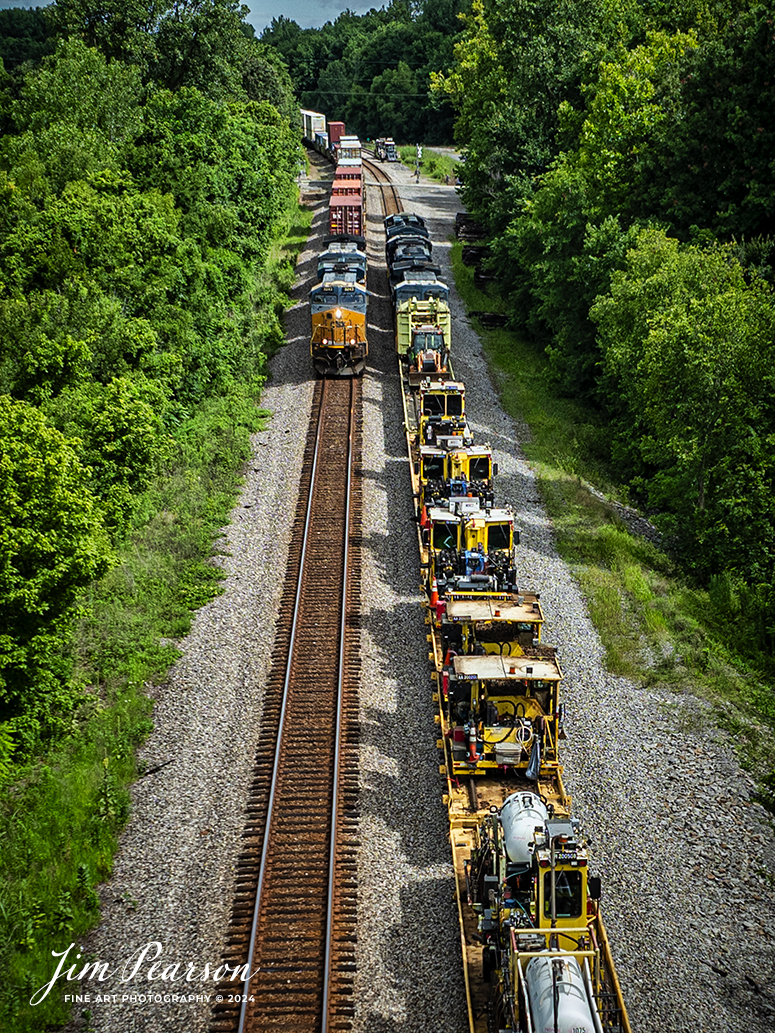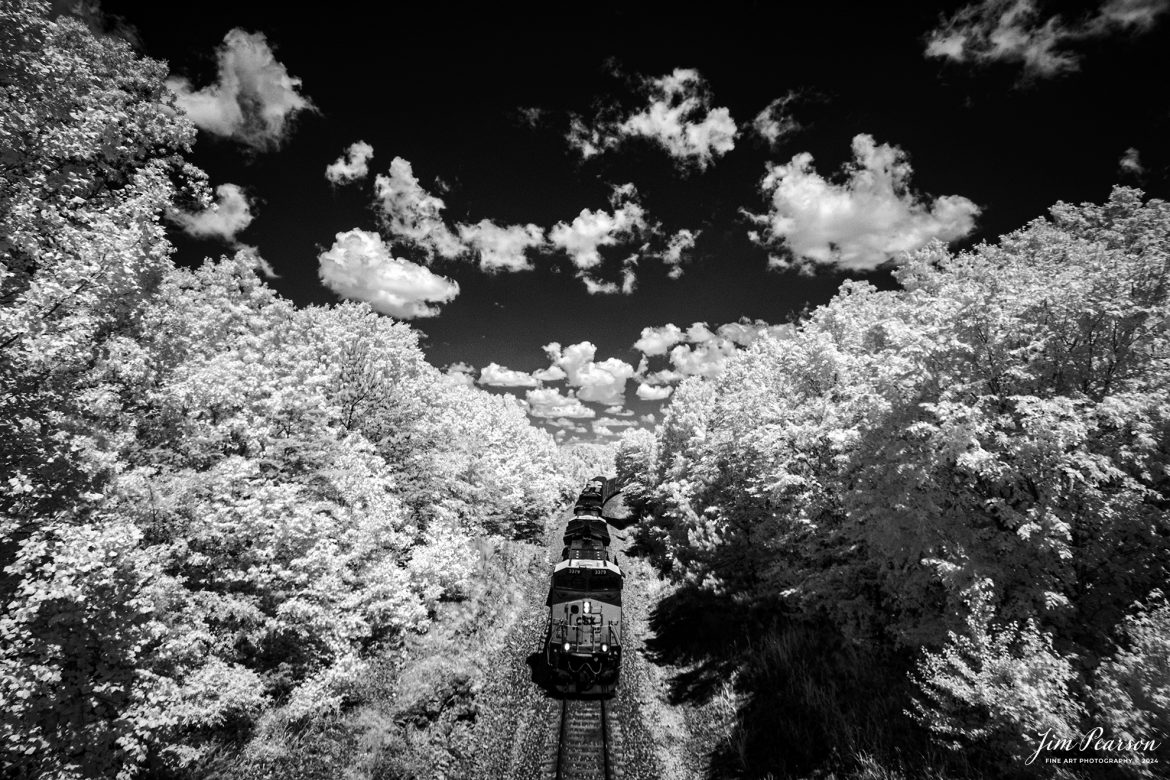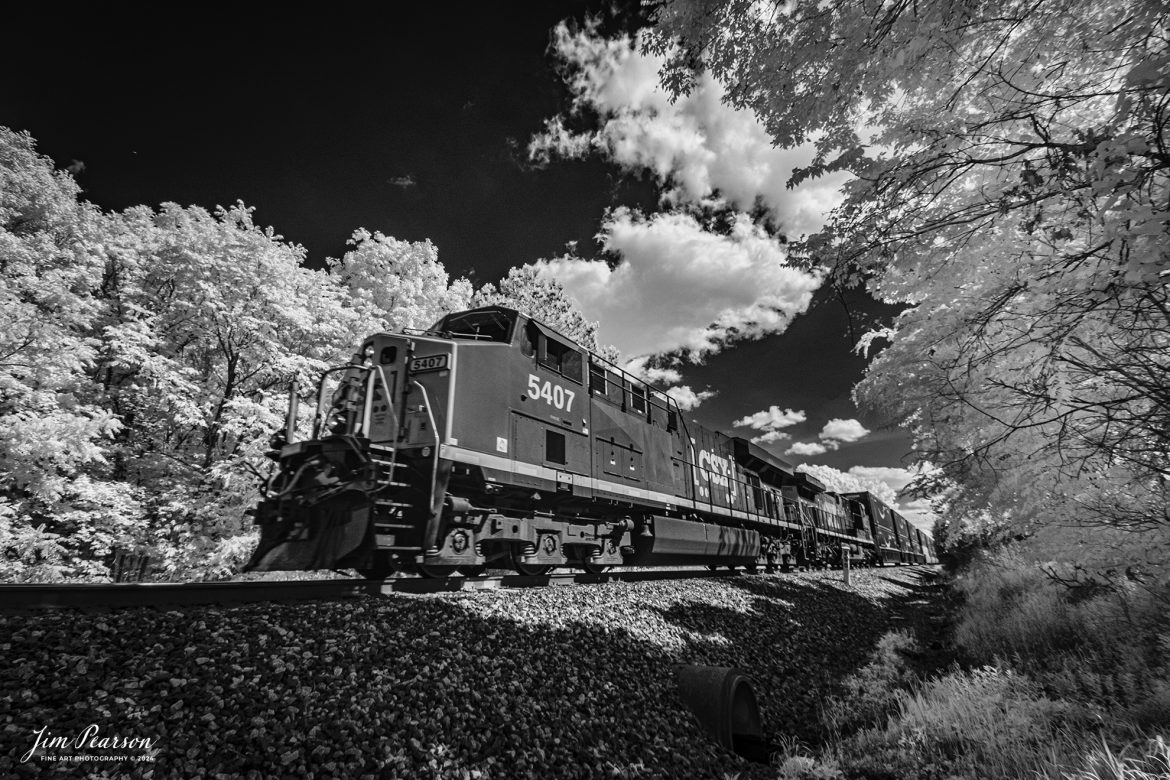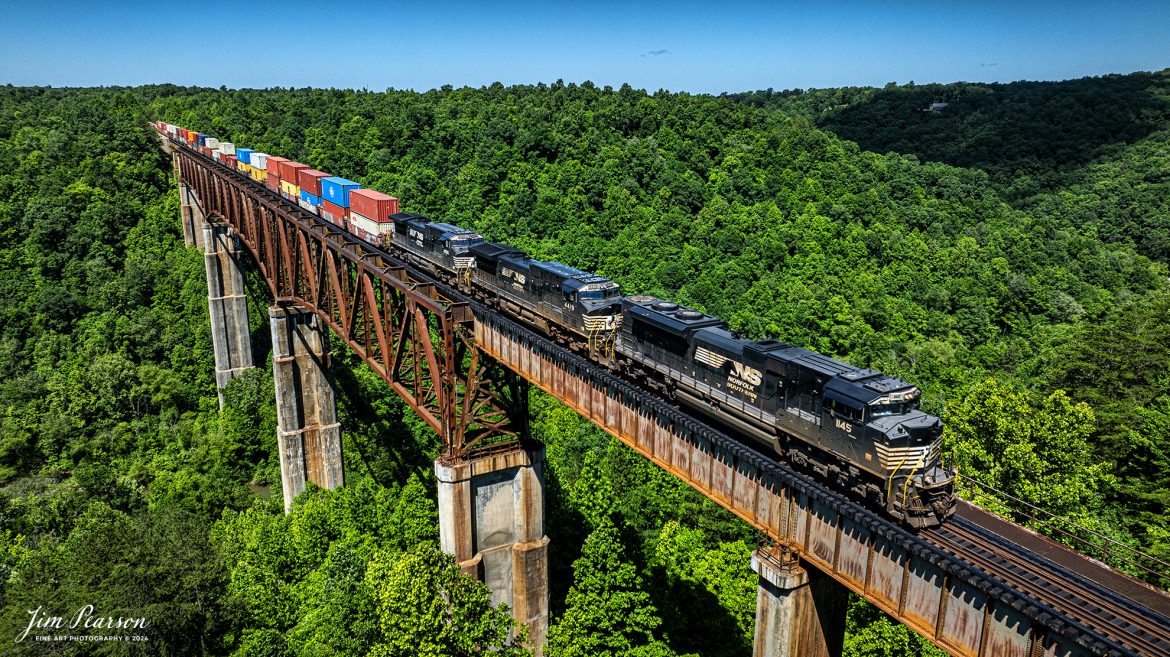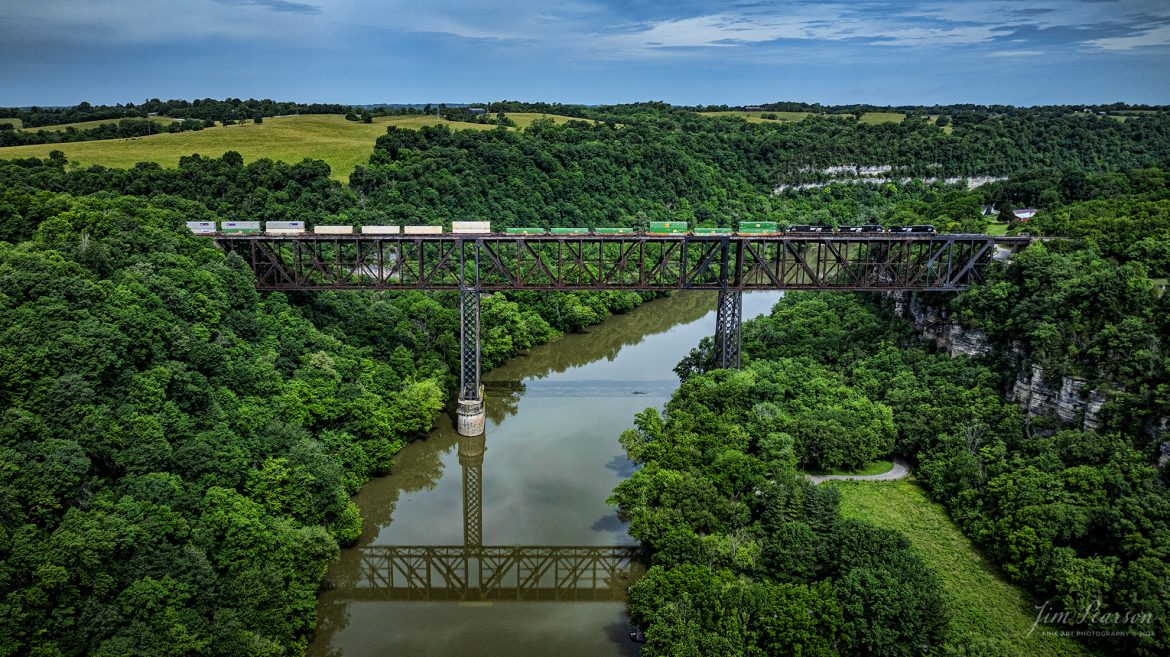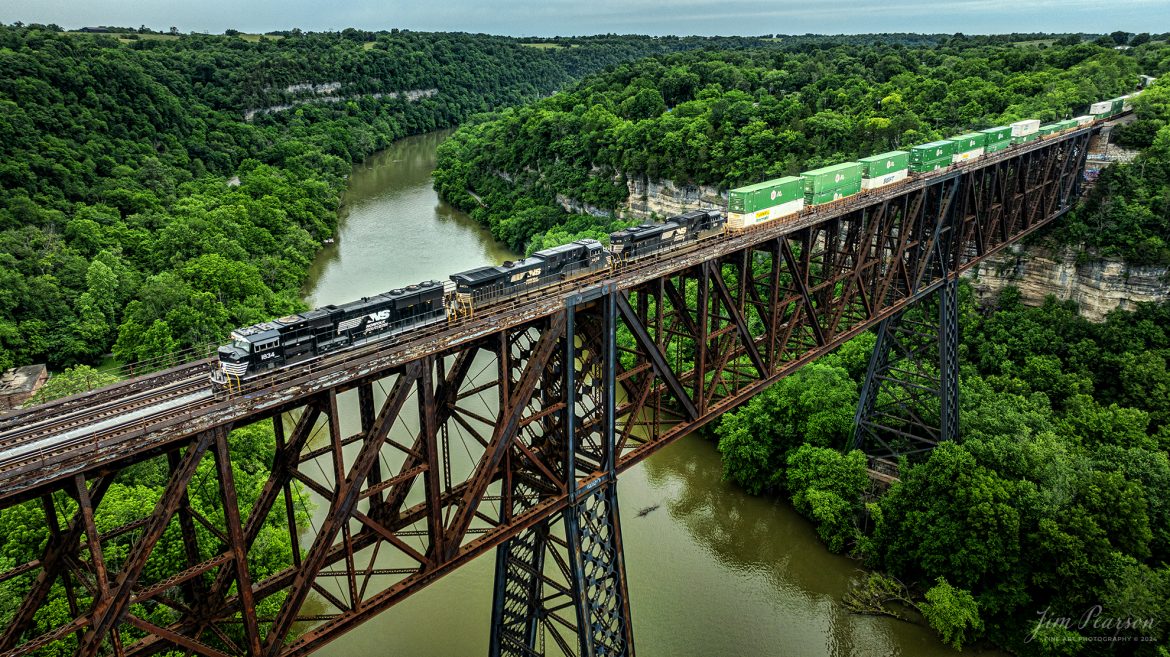CSX I025 heads southbound with CSX Pere Marquette Heritage Unit, 1899, leading the way along the CSX Henderson Subdivision, as they roll slowly through a work area where a crew is working on one of the crossings at Hanson, Kentucky, on July 18th, 2024.
According to a CSX Press Release: May 1, 2024 – CSX has introduced the latest addition in its heritage locomotive series, paying homage to the rich history of the Pere Marquette Railroad. This new unit showcases the Pere Marquette’s legacy, dating back to its inception on November 1, 1899.
The Pere Marquette Railroad, operating in the Great Lakes region of the United States and parts of southern Ontario, Canada, derived its name from Jacques Marquette, a notable French Jesuit missionary credited with founding Michigan’s first European settlement in Sault Ste Marie. After years of operation, the company merged with the Chesapeake and Ohio Railway (C&O) on June 6, 1947, eventually becoming part of the renowned CSX network.
The design of the Pere Marquette heritage locomotive was meticulously crafted by employees at the CSX Waycross Locomotive Shop. According to CSX Carman Painter Eric Lee, “We had to measure each stripe precisely and position the words just right to ensure it captured the look of the original design. It took us about four days just to lay out the stripes before we could begin painting.”
A fascinating tidbit related to the history of Pere Marquette is its cameo in the 2004 film “The Polar Express.” The steam locomotive Pere Marquette 1225 served as the inspiration for the train depicted in the movie, with audio recordings of the actual locomotive in operation featured in the film. Interestingly, the locomotive had been donated to Michigan State University and was exhibited near the university’s football stadium. The author of “The Polar Express” book drew inspiration from seeing this locomotive on display during childhood, solidifying its place in popular culture.
CSX’s dedication to honoring the history and significance of the Pere Marquette Railroad through this new locomotive underscores the company’s commitment to preserving and celebrating the heritage of American railroads. Keep an eye out as this remarkable piece of history moves across the CSX network, bridging the past with the present.
Tech Info: DJI Mavic 3 Classic Drone, RAW, 22mm, f/2.8, 1/1600, ISO 100.



